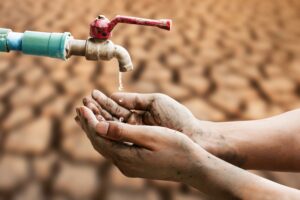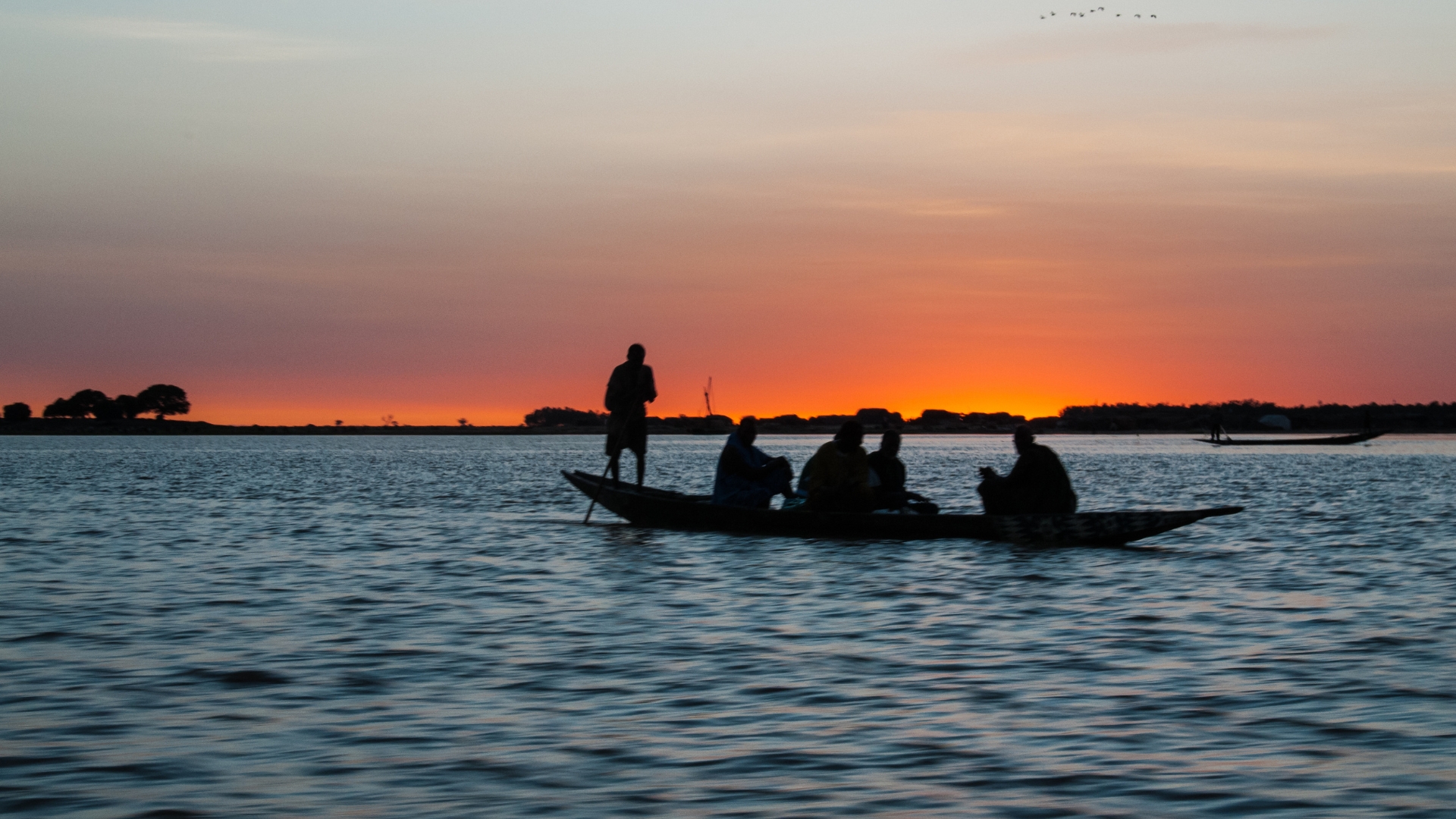Climate crisis: The deadly pairing of high vulnerability and rapid population growth
Written by Olivia Nater | Published: July 20, 2023
World leaders are still largely ignoring the urgent need to increase funding for international family planning programs – a need exacerbated by the escalating climate crisis. A new report adds to previous scientific warnings that the most vulnerable areas are also experiencing the fastest population growth, which means that the number of lives at risk of deadly climate impacts is rapidly increasing.
A disaster in the making
The climate crisis, like other environmental crises, is at its root driven by growth in population and consumption, as reiterated in the latest (sixth) assessment report by the Intergovernmental Panel on Climate Change (IPCC):
“Globally, GDP per capita and population growth remained the strongest drivers of CO2 emissions from fossil fuel combustion in the last decade.”
This alone should be reason enough for governments around the world to invest in empowering solutions to stabilize our population at a sustainable level. An even more pressing reason, however, is that without population action, millions more people could succumb to the devastating impacts of climate breakdown.
Unfortunately, the worst of these impacts, including severe food and water shortage, and deadly heatwaves and floods, are occurring in the areas with the most rapidly growing, least-prepared populations.
A 2019 paper published in the journal Nature described the Sahel region of Africa as a “powder keg” for these reasons, calling on governments to “avert catastrophe” by urgently investing in girls’ education, family planning, sustainable agriculture, and peace and security.
 A recent report by the Population Institute (PI) adds to this call, by comparing population, gender, and reproductive health indicators for the 80 most vulnerable countries in the world, as ranked by the Notre Dame Global Adaptation Initiative (ND-GAIN). ND-GAIN measures country vulnerability by considering six life-supporting sectors: food, water, health, ecosystem services, human habitat and infrastructure. Each sector is in turn represented by six indicators that represent three components: the exposure of the sector to climate-related or climate-exacerbated hazards; the sensitivity of that sector to the impacts of the hazard; and the adaptive capacity of the sector to cope or adapt to these impacts.
A recent report by the Population Institute (PI) adds to this call, by comparing population, gender, and reproductive health indicators for the 80 most vulnerable countries in the world, as ranked by the Notre Dame Global Adaptation Initiative (ND-GAIN). ND-GAIN measures country vulnerability by considering six life-supporting sectors: food, water, health, ecosystem services, human habitat and infrastructure. Each sector is in turn represented by six indicators that represent three components: the exposure of the sector to climate-related or climate-exacerbated hazards; the sensitivity of that sector to the impacts of the hazard; and the adaptive capacity of the sector to cope or adapt to these impacts.
The PI report found that,
“While the world’s population is currently growing at 0.9 percent a year, in the 80 most climate-vulnerable countries, population is growing on average at twice that pace, 1.8 percent a year. If this rate of growth remained stable, populations in these countries would double in less than four decades. Populations in a dozen of the most vulnerable countries are growing at more than three times the global average speed.”
Case studies
Niger (one of the countries in the Sahel) is in the most precarious position, ranked most climate-vulnerable while also having the highest fertility rate, at 6.7 live births per woman. Niger is expected to warm faster than other areas, which will deal a huge blow to agricultural productivity. Already, 2.5 million Nigeriens are acutely food insecure, and nearly half of children under five are chronically malnourished.
The report points out that huge progress could be made by investing in women’s empowerment initiatives. For example, Niger has one of the world’s highest child marriage rates, with more than three-in-four girls marrying before the age of 18, and nearly one-in-three marrying before age 15.
The report showcases the important grassroots work of Jeunes Volontaires pour l’Environnement (JVE), a group of young volunteers working to ensure family planning is recognized as a vital climate resilience strategy in the Sahel.
Other Sahel countries, including Chad and Mali, are in the top 10 for both climate vulnerability and population growth, as is the Democratic Republic of the Congo (DRC).
The report also highlights case studies from the Philippines (ranked 68th for ND-GAIN and with a fertility rate of 2.7), Uganda (ranked 13th for ND-GAIN, with a fertility rate of 4.4), and Guatemala (ranked 77th, with a fertility rate of 2.3). The PATH Foundation Philippines (PFPI), for example, has played a key role in improving the country’s climate resilience by incorporating sexual and reproductive health services into their community development work.
Even though it is not included in the top 80 most climate-vulnerable countries, the authors also profile the United States, the world’s strongest economy and second largest emitter of greenhouse gases (after China). They point out that in the U.S. too, populations are increasing most rapidly in some of the most vulnerable states, including Texas and Florida – not a sustainable situation.
The neglected climate solution
 Investing in girls’ education and family planning is the most effective way to slow population growth, thereby reducing emissions, and most importantly, protecting lives and livelihoods from climate change. Women’s empowerment is also key to lifting countries out of poverty and improving their resilience, both indirectly through the demographic dividend that comes with reduced population growth, and directly by enabling more women to enter the workforce.
Investing in girls’ education and family planning is the most effective way to slow population growth, thereby reducing emissions, and most importantly, protecting lives and livelihoods from climate change. Women’s empowerment is also key to lifting countries out of poverty and improving their resilience, both indirectly through the demographic dividend that comes with reduced population growth, and directly by enabling more women to enter the workforce.
Last November, several Population Connection staff attended a talk by JVE’s Executive Director, Sani Ayouba, at the International Conference of Family Planning in Thailand. During his talk, Ayouba expressed his frustration that population seemed to be a taboo topic at the climate conferences he’d attended. Misguided censorship of population concern is deeply harmful in a time where ethical, empowering population action is more important than ever before.
Of course, fighting climate change primarily requires rapid and drastic emission cuts in the wealthy countries that have precipitated the crisis. But lending assistance to the least responsible countries that are now unjustly facing the brunt of the impacts is just as urgent.

